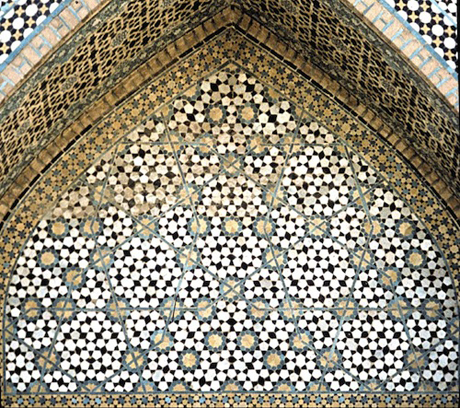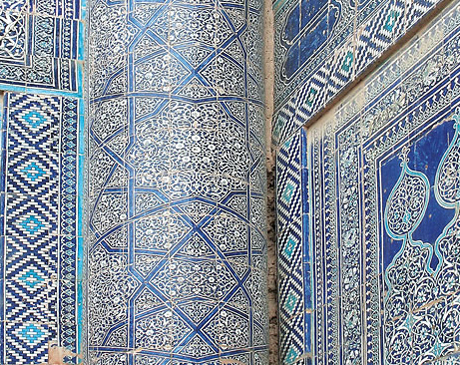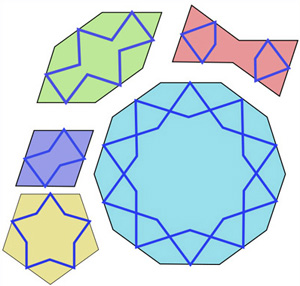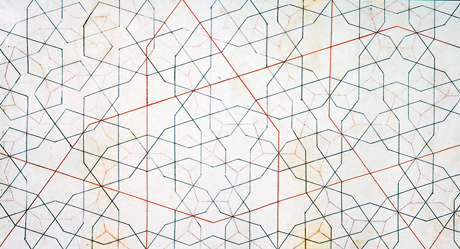Science - The Darb-i Imam Shrine - unveiling hidden knowledge
Origin and time: Isfahan, Iran 1453
Source: Saudi Aramco World September/October 2009 - Vol. 60, No. 5
The Darb-i Imam shrine or the shrine of the Imams is a funerary complex consisting of an ancient cemetery, shrine structures and courtyards, situated in Dardasht, a district of Isfahan. The first structures were built by Jalal al-Din Safarshah during the Qara Qoyunlu reign in 1453. The complex has ever since attracted people from all over the world. Recently, however, the Darb-i Imam shrine has gained far more popularity because of an astonishing discovery: the complex tilework has at its heart a pattern that modern mathematicians have only recently been able to describe. In fact, Peter J. Lu, a Harvard University graduate student, discerned a nearly perfect quasi-crystal on the building, the very geometric pattern discovered by the British Sir Roger Penrose in 1947.
It is generally believed that Islamic designs on mosques and other buildings had been constructed by drafting zigzag outlines with only a straightedge and a compass. This, however, would have caused clearly visible distortions in the long run that would have destroyed the whole tilework. Inspired by a visit of a 15th-century madrasa in Bukhara, Uzbekistan, Peter Lu examined a number of patterns on Islamic buildings and eventually identified five foundation elements, so called girih tiles. These girih tiles, from the Persian word for “knot” made it possible to cover a surface with a periodic pattern by simply aligning tiles to one another, thus preventing the patterns from getting distorted. In most cases the tiles’ edges are not visible, only the decorating lines running from one tile onto another, thus forming the design as seen by the spectator.
A further innovation was achieved by dividing girih tiles into smaller ones to create overlaid patterns at two different scales, a method mathematicians call “self-similarity transformation ”. This kind of subdivision, combined with the symmetry imposed by the shapes of the girih tiles as it is applied on the tilework of the Darb-i Imam shrine, creates non-periodic tiling, just like the Penrose patterns.
The use of the girih tiles for the sake of art, i.e. to design impressive patterns decorating not only Islamic buildings such as the Darb-i Imam shrine but also Qur’an covers, was documented on the famed Topkapı Scroll from the late 15th or early 16th century. The over 29.5-meter long scroll shows geometric patterns with symmetries and dimensional projections highlighted by the use of grid systems and colour-coding and is therefore believed to have been used as a pattern-book for craftsmen. It is uncertain to what extent Islamic craftsmen were aware of the complex mathematical structures underlying the girih tiles and thus the patterns they were designing. However, Lu finds it “quite reasonable to believe that its particular designers knew what they were doing mathematically.”



